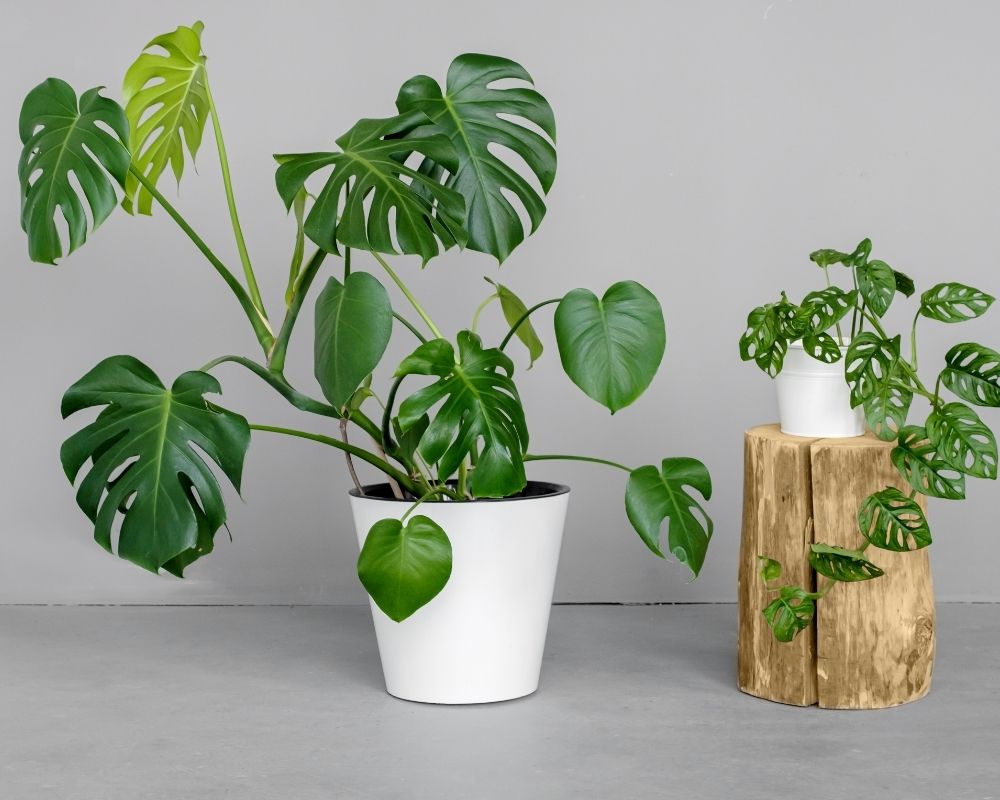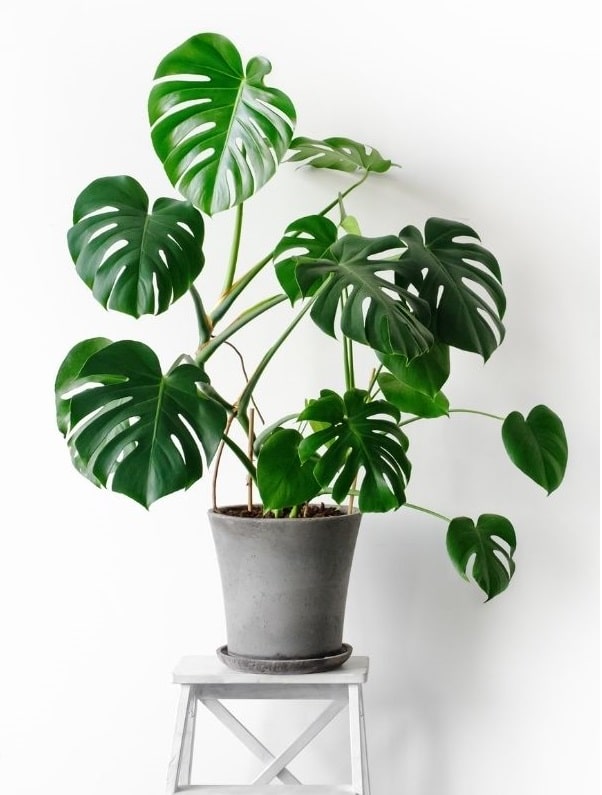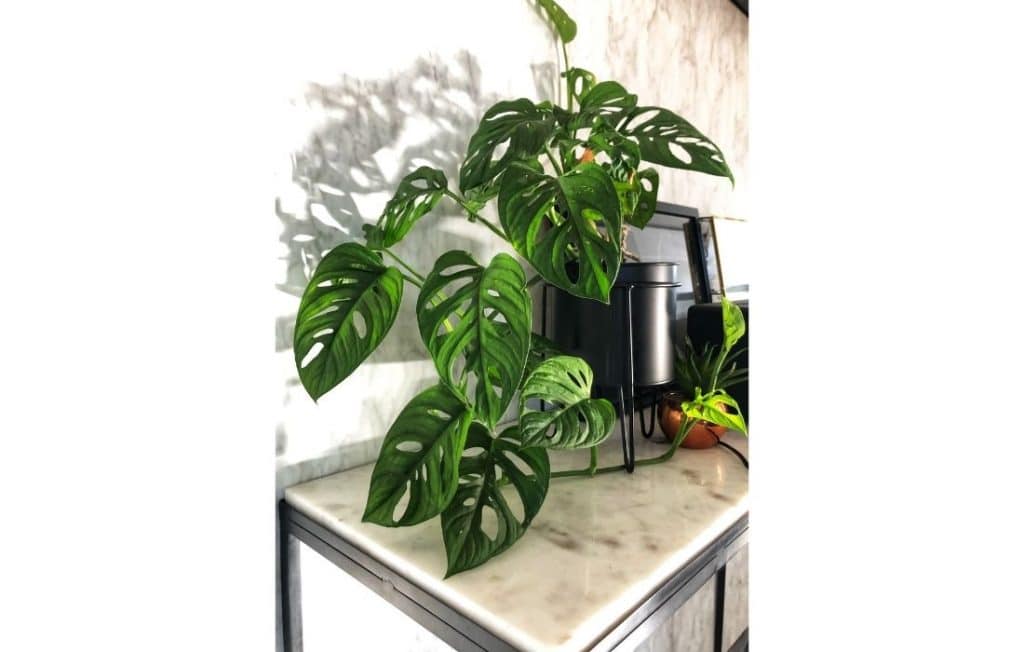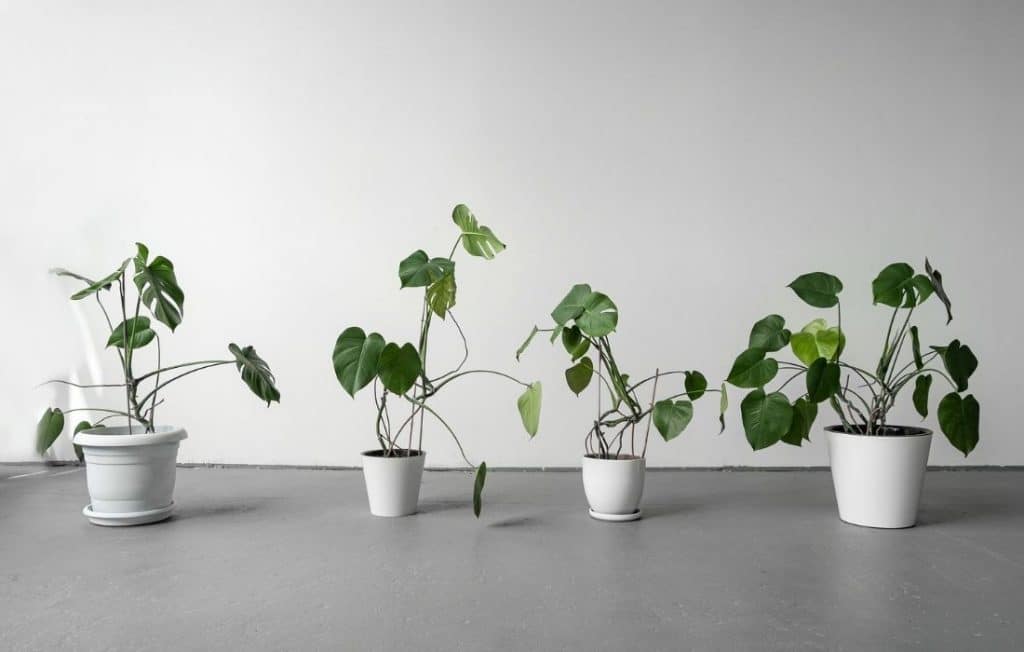Meet the Monstera Plant
Monstera plant, which is preferred indoors, has a remarkable feature with the size and shape of its leaves. It derives from the Latin words “monstrous” and “abnormal” because of its leaf texture. Since the plant can grow both longitudinally and transversely, it is recommended to be used in large halls. It adds an exotic atmosphere to its environment thanks to its leaves. Monstera plant can come in different leaf shapes, patterns and sizes. For this reason, if you want to use this plant in your living room, you will have many options. Due to its dark green, bright color and the form of its leaves, this plant is primarily preferred in interior designs.
However, despite having these interesting leaves, the essence of the plant contains toxic substances. For this reason, it should be kept away from children and pets. Also you can read our other articles about “Toxic Plants”. Click here.

If you’re looking for a complete guide to Monstera deliosa plant care, you’re in the right place. This article will provide you with everything you need to know about growing, maintaining, and propagating a healthy Monstera plant.
What Makes the Monstera Plant Special?
The Monstera plant gets its name from the Latin word “monstrous,” referring to the unusual and dramatic texture of its leaves. Originating from tropical rainforests, this plant thrives in warm, humid environments and can grow both vertically and horizontally. Its versatility makes it an excellent choice for large spaces like living rooms or halls, where it can add an exotic touch. However, while its beauty is captivating, the Monstera plant contains calcium oxalate crystals, which are toxic if ingested. Therefore, it’s essential to keep it out of reach of pets and children.
Monstera Plant Basic Information

- Botanical/Scientific Name: Monstera spp.
- Common Names: Swiss cheese plant, Split-leaf Philodendron, Hurricane plant, Mexican breadfruit
- Origin: Tropical rainforests
- Height/Diameter: 3–20 feet tall, 1–3 feet wide
- Toxicity: Contains calcium oxalate crystals; harmful if ingested and can cause skin irritation.
Now that you know the basics, let’s dive into the details of Monstera plant care to ensure your plant grows healthy and vibrant.
Sunlight Needs for Monstera Plant Care

The Monstera deliciosa plant thrives in bright, indirect sunlight. While it loves light, direct sunlight can scorch its delicate leaves, causing unsightly burns. If your Monstera is in a spot with insufficient light, it may grow slower or develop smaller leaves without the characteristic splits or holes.
- Tip: Rotate your Monstera plant regularly to ensure even growth. If it stays in one position for too long, it may lean toward the light source, resulting in uneven growth.
- Pro Tip: If you’re growing your Monstera in a low-light area, consider using a grow light to supplement its needs.
Watering Tips for Monstera Plant Care
Proper watering is crucial for Monstera deliciosa plant care. These plants enjoy moist soil but are sensitive to overwatering, which can lead to root rot. Here’s how to get it right:
- Water your Monstera when the top 2–3 inches of soil feel dry to the touch.
- Always use room-temperature water to avoid shocking the plant.
- Avoid letting water sit at the bottom of the pot, as this can cause root rot. If excess water accumulates in the saucer, drain it immediately.
- Monitor the humidity levels in your home. Monsteras love humidity, so misting the leaves occasionally or using a humidifier can help keep them happy.
Signs of Overwatering: Yellowing leaves, drooping stems, and water droplets forming on the leaf edges are indicators of too much water. Adjust your watering schedule accordingly.
Ideal Temperature for Monstera Plant Care
The Monstera plant thrives in temperatures between 65°F and 85°F (18°C–29°C). It does not tolerate cold weather or sudden temperature changes, so avoid placing it near drafty windows, air conditioners, or heaters.
- Tip: Keep the temperature above 50°F (10°C) to prevent stress or damage to the plant.
Best Soil for Monstera Plant Care
Monsteras prefer well-draining, aerated soil that retains some moisture without becoming waterlogged. A mix of peat moss, perlite, and potting soil works perfectly. This combination ensures that the roots have access to oxygen while preventing water from pooling around them.
- Tip: Avoid compacted soil, as it can suffocate the roots. Use a pot with drainage holes to allow excess water to escape.
Fertilizing Your Monstera Plant
Fertilizing is an essential part of Monstera plant care, especially during the growing season (spring and summer). Use a balanced liquid fertilizer once a month to provide your plant with the nutrients it needs for healthy growth.
- Tip: Reduce fertilization during the fall and winter months when the plant’s growth slows down. Over-fertilizing during this time can damage the roots.
Pruning and Shaping Your Monstera Plant
Pruning helps maintain the size and shape of your Monstera while encouraging new growth. Remove any yellow, damaged, or lifeless leaves at the base of the plant. If your Monstera is growing too tall or unevenly, you can trim the stems to control its height and shape.
- Tip: Perform pruning in the spring when the plant is actively growing. Use clean, sharp scissors or pruning shears to avoid damaging the stems.
Propagating Monstera Plants

Propagation is an exciting part of Monstera deliciosa plant care, as it allows you to grow new plants from cuttings. There are two main methods:
Stem Cuttings:
- Cut a healthy stem with at least one node and leaf.
- Place the cutting in water, ensuring the node is submerged.
- Once roots develop (usually within a few weeks), transfer the cutting to a pot with well-draining soil.
Root Division:
- Gently remove the plant from its pot.
- Separate the side roots from the main root and plant them in a new pot.
Common Pests and Diseases in Monstera Plants

Like any indoor plant, the Monstera is susceptible to pests such as aphids, mealybugs, and spider mites. Regularly inspect your plant for signs of infestation, including sticky residue, webbing, or discolored leaves.
- Tip: Use a mixture of water and mild soap to clean the leaves and remove pests. For severe infestations, consider using an insecticidal spray.
Additional Tips for Monstera Deliciosa Plant Care
- Clean the Leaves: Dust can accumulate on the large leaves, blocking sunlight and hindering photosynthesis. Wipe them down with a damp cloth every couple of weeks.
- Support Growth: As your Monstera grows, it may need support. Use a moss pole or trellis to guide its growth and encourage climbing.
- Repotting: Repot your Monstera every 1–2 years or when it outgrows its current pot. Choose a pot slightly larger than the previous one to give the roots room to expand.
Why Choose a Monstera Plant for Your Home?

The Monstera deliciosa is not just a stunning addition to your home decor; it’s also a low-maintenance plant that’s perfect for beginners. Its ability to adapt to various conditions makes it a versatile choice for any indoor space. However, remember that its leaves and stems are toxic, so handle it with care and keep it away from curious pets and children.
Conclusion
Caring for a Monstera plant is a rewarding experience that brings a touch of the tropics into your home. By providing the right amount of light, water, and nutrients, you can enjoy a healthy and vibrant plant for years to come. Whether you’re pruning, propagating, or simply admiring its unique foliage, the Monstera plant will never fail to impress. Follow these tips for Monstera plant care, and watch your plant thrive!




